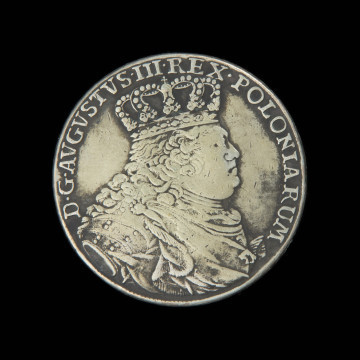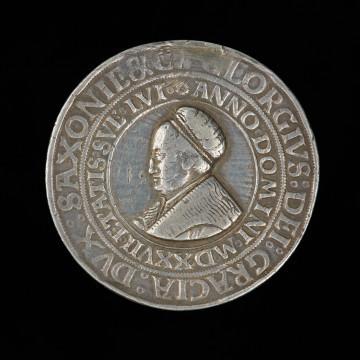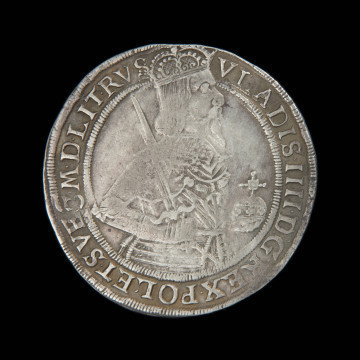
Thaler
1754
National Museum in Szczecin
Part of the collection: German coins
After the untimely death of Christian I, Elector of Saxony (1560–1591), the question of succession arose in the Saxon state. Although he left three sons, the eldest of them, Christian II, was only 8 years old. Regents ruled on behalf of the minor ruler. Succession to the throne had always been an important issue, and the lack of an heir prepared for the task has affected the stability of the state. Attempts were therefore made to prove that despite the death of the ruler and the minor age of his son, the duchy was functioning smoothly. This may have been influenced by concerns over territorial losses and the decline of the state’s stature within the Reich. Undoubtedly the division of the dynasty in 1485 was remembered, when Thuringia broke away from Saxony, and the representatives of the Albertine line lost their right to the electoral title. Therefore, when designing the thalers minted after the death of Christian I, the emphasis was placed on the propaganda aspect. The obverse of the coins featured all the young Saxon dukes – Christian II (1583–1611), Johann Georg (1585–1656) and Augustus (1589–1615). They were all mentioned by name, while the inscription on the reverse of the coin informed that they were not only dukes, but also brothers. Thus, it emphasised their equal status and close family ties. Thanks to this procedure, an unambiguous message was conveyed – that there was harmony and solidarity in the family based on brotherly feelings. The depiction of three brothers has certainly also a symbolic overtone, since three was perceived in European culture as a perfect, mystical and sacred number. It was a symbol of divinity, sacrum, happiness, strength, growth, development and harmony. Thalers of this type were minted in 1592–1600. In 1601, Christian II was declared fit to rule independently and took the throne. Although the brothers continued the tradition of joint minting, the composition of the stamps changed. The image of the young ruler was placed on the obverses of the thalers, while the images of his two brothers were transferred to the reverses of the coins.
Mieszko Pawłowski
Other names
Taler
Author / creator
Dimensions
cały obiekt:
Object type
coin, money
Technique
minting
Material
silver
Creation time / dating
Creation / finding place
Owner
National Museum in Szczecin
Identification number
Location / status

1754
National Museum in Szczecin

1527
National Museum in Szczecin

1657
National Museum in Szczecin
DISCOVER this TOPIC
National Museum in Lublin
DISCOVER this PATH
Educational path